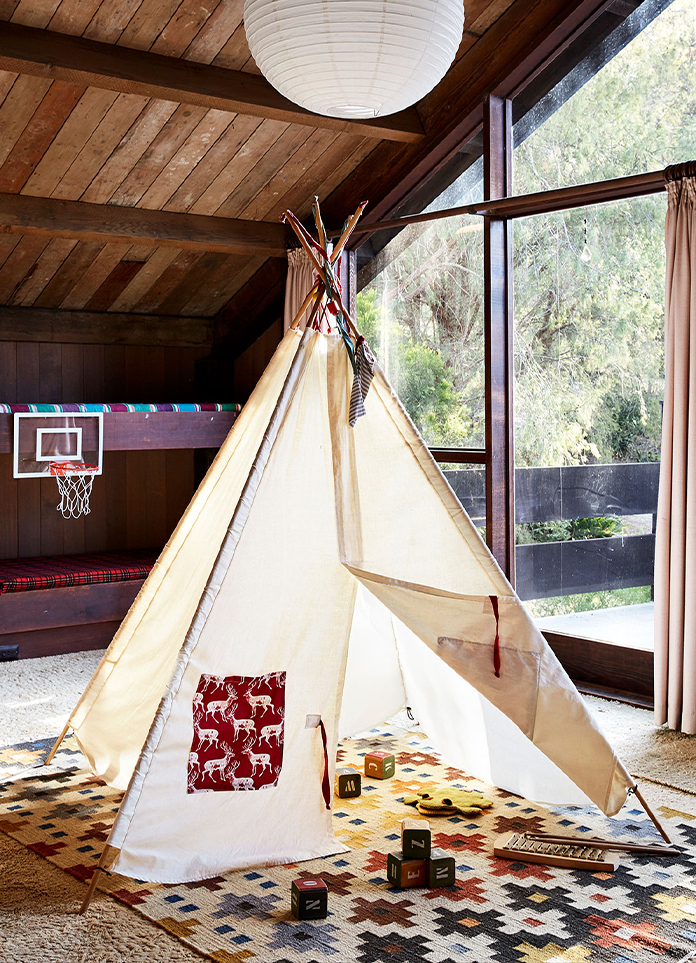
In its suburban context, the house appears as an extraneous object of a scale difficult to gauge and of an intriguing character. Standing at the end of a cul-de-sac between detached houses and vineyards, the pitched volume in concrete rises devoid of any symbol of domesticity, carved by the cut of the garage and a folded roof, reading as a monumental, introverted form. A mineral garden path leads into a door, mimetised within the concrete frontage.
Once inside, through a threshold containing the gym and garage, the arrangement of space underneath the pitched roofs is finally revealed: an L-shaped space with the lounge, kitchen, and dining areas completely open to a garden to the south and west. From these spaces, the two legs —and thus, the true form of the volume— becomes evident. At both ends, where the height drops at its lowest, an open passage connects the garden to the street and an adjacent field, before the volume concludes on two external rooms. What appears to be a very hermetic typology from the street, proves to be surprisingly porous to its interior.
An elliptical staircase at the junction of the two legs leads onto the first floor, where the apex is high enough to accommodate the bedrooms and a study. With no openings on the external walls, the bedrooms get their daylight and ventilation by glazed folds to the zinc roof and guiding the views out into the deep mountainous landscape, partially avoiding the immediate, suburban scene.
- Architect: DF DC
- Photos: Simone Bossi
- Words: Gina
















